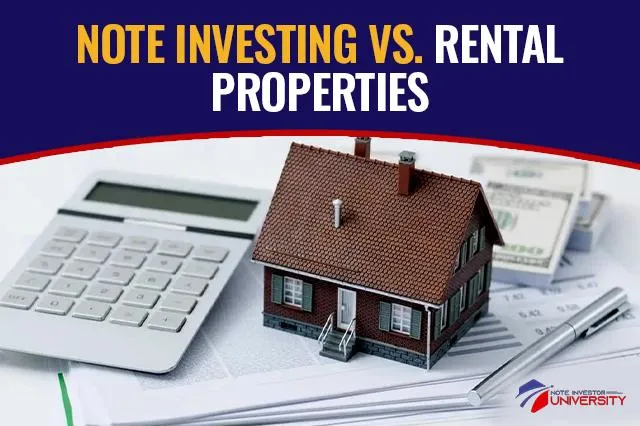
Note Investing vs. Rental Properties: Which Builds Passive Income Faster in 2025?
If you’ve been researching ways to earn passive income through real estate, you’ve probably heard about both rental properties and note investing. But which one builds wealth faster and with fewer headaches?
In 2025, more real estate investors are rethinking the old “tenants and toilets” model and turning to mortgage notes as a smarter, leaner alternative.
Let’s break down the key differences between the two and help you decide which path is right for your investment goals.
What’s the Difference?
Rental Properties
You buy a physical property.
You rent it out to tenants.
You’re responsible for maintenance, management, and vacancies.
Income comes from monthly rent minus expenses.
Note Investing
You buy the mortgage (the debt, not the property).
You become the lender and collect monthly payments.
The borrower stays in the home.
No property management or repairs required.
In other words, with rentals, you own the building. With notes, you own the income stream.
[Get expert insight on how to start note investing the right way - Schedule a Call ]
Which Generates Passive Income Faster?
Upfront Costs
Rental property typically requires 15 to 25 percent down, plus closing costs, reserves, and rehab. That could easily total $40,000 to $80,000 or more.
Note investing often allows you to start with as little as $5,000 to $10,000 by purchasing a performing note or a partial interest in a larger note.
Note investing wins with a lower barrier to entry and faster time to first cash flow.
Monthly Cash Flow
Rental income depends on rent minus expenses like maintenance, taxes, and property management. With notes, you receive a fixed monthly payment from the borrower without ongoing costs. Note investing offers more consistent income with fewer surprise expenses.
Time and Effort
Rental properties require active management: coordinating repairs, screening tenants, and handling evictions. Note investing is far more passive. Once you purchase a note and set up loan servicing, the income becomes hands-off.
For true passive income, note investing is the better fit.
Risk Profile
Rentals come with risks like market downturns, vacancies, and legal liability.
With notes, default risk exists, but the investment is secured by real estate. In some cases, you may even acquire the property at a discount. Both have risk, but note investing often allows more exit strategies.
Which Is Better for Scaling?
Scaling a rental portfolio means managing more mortgages, more tenants, and more overhead. With notes, you can scale your portfolio by simply acquiring more paper. Many investors at Note Investor University hold ten or more notes, eliminating the need for a property manager.
Owning ten rentals is a full-time job.
Owning ten notes is passive income.
Which Is Better for You?
If your goal is to build cash flow quickly with less capital, note investing is the smarter option.
If you enjoy managing properties hands-on, rentals may be a better fit.
If you prefer income without dealing with tenants, notes are the clear winner.
If you’re looking for long-term appreciation and equity, rentals might offer that, but with more effort and risk. And if you want to start today with $5,000 or less, note investing gives you that opportunity.
Why More Investors Are Choosing Notes in 2025
Rising property prices are squeezing returns for rental investors.
More banks and hedge funds are releasing mortgage notes to private investors.
Technology has made it easier than ever to buy, analyze, and manage notes online.You get the cash flow of real estate without the burden of owning the bricks.
Want to Learn More?
At Note Investor University, we help beginners become confident note investors—without the high coaching fees or complex learning curves. Our $1 Starter Pack walks you through your first deal step-by-step.
Learn the proven basics of mortgage note investing for just $1.